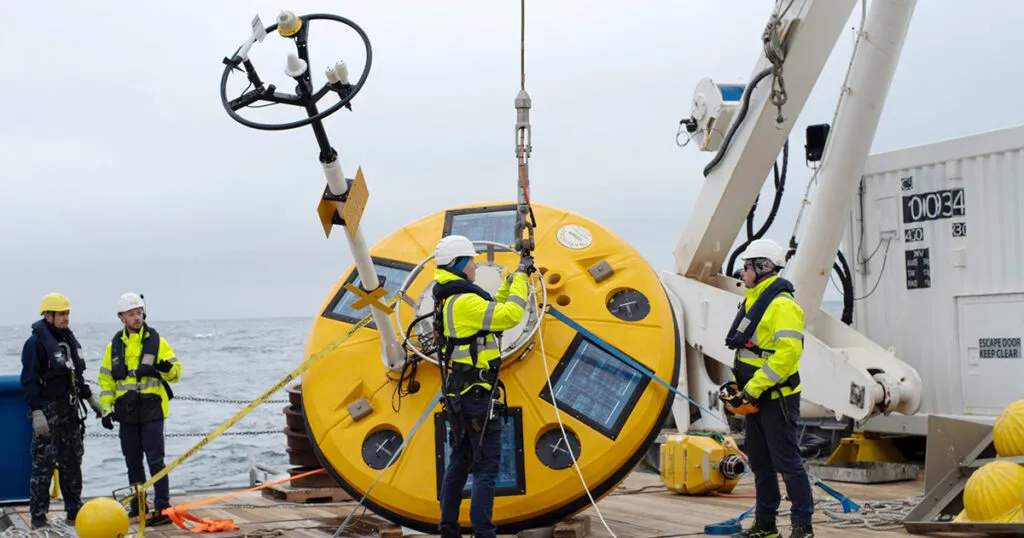In the vast, mysterious realm of the ocean, a team of scientists led by Dr. Silvia Ines Romero of Argentina’s Servicio de Hidrografia Naval has just completed a groundbreaking expedition. Their mission? To unravel the intricate dance between the mighty Malvinas ocean current, submarine canyons, and the marine biodiversity that makes Argentina’s waters renowned.
The team, aboard the Schmidt Ocean Institute’s R/V Falkor (too), deployed an impressive array of technologies to collect the most comprehensive data set available on the subject. Their goal was to better understand the region’s plankton blooms, the lifeblood of the food web that sustains the Argentinian fishing industry. These blooms are so large that they can be observed from space, a testament to the region’s rich biodiversity.
The team hypothesized that these submarine canyons serve as conduits between the deep sea and shallower waters, providing essential nutrients that support Argentina’s massive phytoplankton blooms. Over 27 days in October, they used a glider, 46 sea surface drifters, two seafloor landers, a moored buoy, and additional shipboard technologies to map four submarine canyons and surrounding areas. They aimed to collect data on how currents interact with the seafloor.
Dr. Romero emphasized the importance of understanding the shape of the canyons, stating, “Knowing the shape of the canyons is the first step to understanding how currents move within them.” The high-quality maps, using data from R/V Falkor (too)’s sonars, revealed striking seafloor features; some canyons had steep walls, while others had terraces.
The team also used Schmidt Ocean Institute’s remotely operated vehicle (ROV) SuBastian to observe the biodiversity and collect samples in the canyons. With the high-resolution ROV cameras, they discovered coral-covered walls, black sediment that spewed bubbles, suggesting the presence of methane seeps, and large schools of fish.
The data collected will be crucial in understanding the specific mechanisms that fuel phytoplankton blooms and control currents within the canyons. This research will provide insight regarding harmful algal blooms, biodiversity protection, and climate change resilience. The high-quality maps will be given to the Argentine Hydrographic Service to improve navigational charts and will also be a part of a global effort to map the seafloor through the Nippon Foundation-GEBCO Seabed 2030 project.
This expedition marks Schmidt Ocean Institute’s second collaboration with Argentinian scientists within the country’s waters. The team leading the first expedition to the Mar Del Plata submarine canyon observed rich biodiversity and fragile cold-water coral ecosystems. The ongoing collaboration between Schmidt Ocean Institute and Argentinian scientists is a testament to the power of international cooperation in advancing our understanding of the ocean.
As the team spends the coming months analyzing the data, one thing is clear: this expedition has not only deepened our understanding of the Malvinas ocean current and submarine canyons but has also highlighted the importance of continued exploration and research in our quest to protect and preserve the ocean’s biodiversity.

